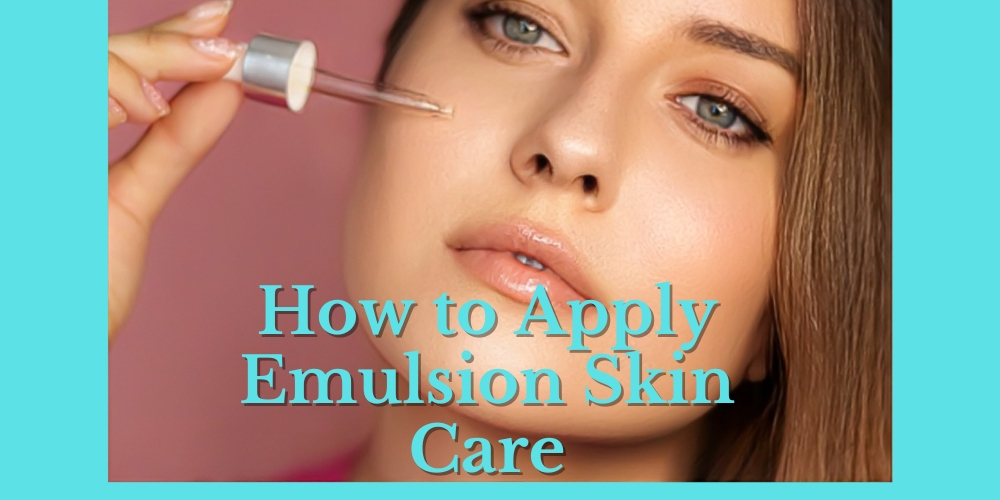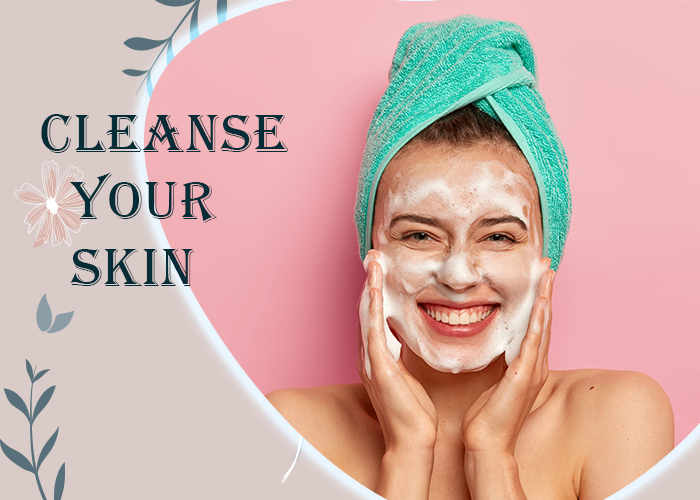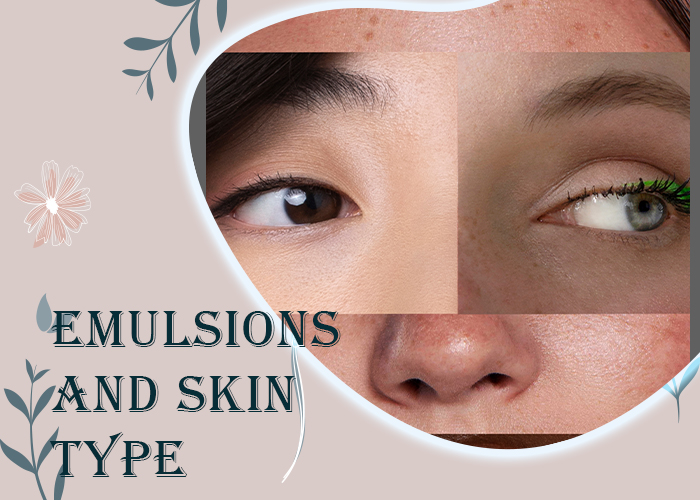Are you looking for lightweight skincare products? In the ever-expanding universe of skincare, emulsions have emerged as versatile products that balance light hydration and nourishment. To reap the full benefits of these versatile formulations, it’s crucial to understand the art of emulsion application. So, How to apply emulsion skincare? Let’s talk about How to Apply Emulsion Skin Care.
Whether you’re a skincare novice or a seasoned enthusiast, this detailed guide will walk you through the steps to ensure your skin drinks in the goodness of emulsions effectively.
What is Emulsion?
Emulsions are milky moisturizers that have a gel-like consistency, which sets them apart from traditional creams and face oils. They are water-based products, making them lighter and less greasy compared to traditional moisturizing creams. Emulsions serve as a lightweight alternative to heavier creams and oils, which can leave the skin feeling greasy and weighed down. In Japanese and Korean skincare products, emulsions are typically sold in pump or bottle form due to their semi-liquid consistency.
How to Apply Emulsion Skin Care Step-by-Step
By applying emulsion correctly, you can enhance its effectiveness and make the most out of its moisturizing properties. So, it is super important
Cleanse Your Skin:
Begin with a clean canvas. Use a gentle cleanser to remove any makeup, dirt, or impurities from your face.
Apply Toner:
If you include toner in your skincare routine, apply it after cleansing to balance the skin’s pH levels. This step is optional but can enhance the absorption of subsequent products.
Dispense a Small Amount:
Every emulsion has its own recommended dosage, typically a pea-sized amount. Dispense the emulsion onto your fingertips. Remember, using too much can potentially lead to product waste. It will only need a little amount on your face. These emulsion products are created like that.
Dotting Across the Face
Gently dot the emulsion across your face, focusing on areas that may need extra attention or are prone to dryness. Common areas include the forehead, cheeks, nose, and chin. This strategic dotting ensures an even distribution of the product.
Smooth and Spread
Using upward and outward motions, start spreading the emulsion across your face. The goal is to cover your skin evenly, ensuring the emulsion is absorbed effectively. Gentle, circular motions can promote circulation and enhance absorption.
Patting
Take a moment to pat the emulsion on your skin. When applying an emulsion or skincare product to your skin, instead of rubbing or massaging it in, it is recommended to use gentle patting motions. This technique helps the product absorb into the skin more effectively without putting unnecessary pressure on the skin’s surface. Use circular motions to promote absorption and stimulate blood circulation.
Layering (Optional):
If your skincare routine involves multiple products, apply emulsion after serums and before heavier creams or moisturizers.
Sunscreen (Daytime):
In your morning routine, always use emulsion with sunscreen to protect your skin from UV rays.
Additional Tips:
- If you’re applying emulsion as part of your nighttime routine, consider skipping the sunscreen step and allowing the emulsion to work its magic overnight.
- Emulsions work best when used consistently. Incorporate them into your routine both morning and night for optimal results.
- Consider adjusting the quantity or frequency of emulsion application based on seasonal changes. You might need more hydration in drier months and less in humid conditions.
Emulsions and Skin Type
Emulsions tend to work for literally all skin types and I’m not kidding. Let’s see it in detail!
- For oily skin, apply an emulsion as the final moisturizing step. I have an oily face so I know people with oily skin frequently complain about the greasiness that emerges after using moisturizer. The great benefit of emulsion is, that it can be easily absorbed into the skin, leaving no trace. If you have oily skin, you can also apply sunscreen after the emulsion before going outside. So, bye bye greasiness!
- Emulsion is secure in use and doesn’t trigger allergic reactions or inflammation of the skin when used. Professionals recommend emulsion for sensitive skin types. It helps to keep your skin’s pH balanced and provides ample moisturization without creating irritation.
- Salicylic acid in the emulsion can be your ultimate acne treatment. It will deeply moisturize your skin without clogging your pores, preventing future acne breakouts. To treat acne, To treat acne, apply emulsion only to the T-zone. You can also apply it to your entire face patting it nicely later on.
- Emulsions can be a game-changer for individuals with dry skin, providing a balance between lightweight hydration and nourishment. Dry skin often lacks sufficient moisture, leading to tightness, flakiness, and a dull complexion. Emulsions, with their unique water-in-oil or oil-in-water formulations, are designed to address these concerns and offer a solution that is neither too heavy nor too light.
Wrapping Up
Its How to Apply Emulsion Skin Care , will help you. Emulsion application is not just a skincare step; it’s a ritual of self-care. Embrace the lightweight, hydrating benefits of emulsions, and allow your skin to revel in the nourishment it deserves. Consistent use of emulsions can contribute to a more supple, radiant complexion. With each application, you’re not just hydrating your skin; you’re nurturing a healthy relationship with yourself—one that radiates through your vibrant and well-nourished skin.
FAQ
How often should I use emulsion?
Answer: The frequency of emulsion use can vary based on individual skin needs, preferences, and the specific product you’re using. However, in general, emulsions are designed to be used regularly as part of your skincare routine. Emulsion can be used twice daily, in the morning and evening, as part of your skincare routine.
Can emulsion replace a moisturizer?
Answer: Emulsion can replace a traditional moisturizer for those with normal to oily skin. However, those with drier skin may benefit from layering emulsion under a richer moisturizer.
Can I use emulsion around the eyes?
Answer: While emulsions are generally designed for facial application, caution should be exercised when considering the delicate eye area. The skin around the eyes is thinner and more sensitive than the rest of the face, making it susceptible to irritation. It is advisable to choose a dedicated eye cream specially formulated for the eye area, as these products are often gentler and address specific concerns such as fine lines, puffiness, and dark circles.




